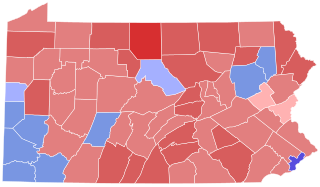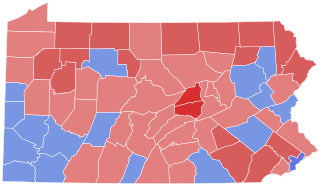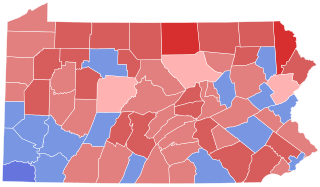
The 1998 Minnesota gubernatorial election took place on November 3, 1998. Reform Party candidate Jesse Ventura defeated Republican Party challenger Norm Coleman and Minnesota Democratic–Farmer–Labor Party challenger Hubert H. "Skip" Humphrey III. Ventura governed with a DFL-controlled state Senate and a Republican-controlled state House. As of 2024, this is the only time that a Reform Party candidate has been elected to statewide office.

The 2006 New York gubernatorial election took place on November 7, 2006, to elect the governor and lieutenant governor of New York, concurrently with elections to the United States Senate in other states and elections to the United States House of Representatives and various state and local elections, then incumbent Republican governor George Pataki chose not to run for re-election in a fourth term. Democrat Eliot Spitzer, the New York Attorney General, won the election over former Republican state Assembly minority leader John Faso. As of 2024, this is the last time the Governor’s office in New York changed partisan control. This was the first open-seat election since 1982. Primary elections were held on September 12. This is the last gubernatorial election where any of the following counties voted Democratic: Genesee, Chautauqua, Cattaraugus, Niagara, Fulton, Steuben, Tioga & Schoharie.

The 2006 Pennsylvania gubernatorial election was held on November 7, 2006 and included the races for the Governor of Pennsylvania and Lieutenant Governor of Pennsylvania. Incumbent Democratic Governor Ed Rendell successfully ran for re-election. Pennsylvania's first female lieutenant governor, Catherine Baker Knoll, was also running for re-election.
The Pennsylvania Republican Party (PAGOP) is the state affiliate of the Republican Party in Pennsylvania. It is headquartered in Harrisburg. Its chair is Lawrence Tabas and is the second largest political party in the state behind the Pennsylvania Democratic Party.

United States gubernatorial elections were held on November 5, 2002, in 36 states and two territories. The Republicans won eight seats previously held by the Democrats, as well as the seat previously held by Minnesota governor Jesse Ventura, who was elected on the Reform Party ticket but had since renounced his party affiliation. The Democrats won 10 seats previously held by the Republicans, as well as the seat previously held by Maine governor Angus King, an independent. The elections were held concurrently with the other United States elections of 2002.

The 1998 Pennsylvania gubernatorial election was held on November 3, 1998. The candidates were incumbent Republican Tom Ridge, Democrat Ivan Itkin, Constitutionalist Peg Luksik and Libertarian Ken Krawchuk. Ridge, a popular moderate, won with 57 percent of the votes cast.

The 1994 United States Senate election in Pennsylvania was held November 8, 1994. Incumbent Democratic U.S. Senator Harris Wofford, who was appointed to the position in 1991 and won a special election the same year, sought re-election to a full six-year term, but he was defeated by Republican Rick Santorum. By a margin of 2.5%, this election was the second-closest race of the 1994 Senate election cycle, behind only the election in California.

The 1994 Pennsylvania gubernatorial election was held on November 8, 1994. The incumbent governor, Bob Casey, Sr. (Democrat), was barred from seeking a third term by the state constitution. The Republican Party nominated Congressman Tom Ridge, while the Democrats nominated Mark Singel, Casey's lieutenant governor. Ridge went on to win the race with 45% of the vote. Singel finished with 39%, and Constitution Party candidate Peg Luksik finished third, garnering 12% of the vote.

The 1998 United States Senate election in Pennsylvania was held November 3, 1998. Incumbent Republican U.S. Senator Arlen Specter won re-election to a fourth term.

The 1990 Pennsylvania gubernatorial election was held on November 6, 1990. Incumbent Democratic governor Robert P. Casey easily defeated Republican Barbara Hafer. Governor Casey defeated Hafer by a margin of 35.29%, and carried 66 out of 67 Pennsylvania counties.

The 1986 Pennsylvania gubernatorial election was held on November 4, 1986. Democrat Bob Casey narrowly defeated Republican Bill Scranton III, in a race that featured two very high-profile candidates. As of 2022, this is the most recent Pennsylvania gubernatorial race to have a margin within five points for either party.

The 1978 Pennsylvania gubernatorial election was held on November 7, 1978. Incumbent Governor Milton Shapp was constitutionally ineligible to run for a third consecutive term in office. Republican Dick Thornburgh defeated Democrat Pete Flaherty in the general election.

The 1974 Pennsylvania gubernatorial election was held on November 5. Incumbent Democratic Governor Milton Shapp defeated Republican Drew Lewis. Under the state's 1968 constitution, Shapp was the first governor who was eligible to run for consecutive terms.

The 1910 Pennsylvania Gubernatorial election was held on November 8, 1910. The main candidates were Republican John K. Tener, Democrat Webster Grim, Keystone Party leader William H. Berry, and Socialist John W. Slayton.

The 1970 Pennsylvania gubernatorial election was held on November 3. Democrat Milton Shapp challenged incumbent Republican Lieutenant Governor Ray Broderick.

The 1966 Pennsylvania gubernatorial election was held on November 8. Republican Ray Shafer, the state's incumbent Lieutenant Governor, was elected to the state's highest office after holding off a charge from future governor Milton Shapp.

The 1962 Pennsylvania gubernatorial election was held on November 6. Republican Bill Scranton and Democrat Richardson Dilworth, each a member of a powerful political family, faced off in a bitter campaign.

The 1958 Pennsylvania gubernatorial election was held on November 4. Democrat David Lawrence defeated Republican Art McGonigle by a smaller than anticipated margin.

The 1950 Pennsylvania gubernatorial election was held on November 7. For the twenty-second time in twenty-five elections, the Republican candidate was victorious, but by a much smaller than usual margin. Superior Court Judge John S. Fine defeated Democrat Richardson Dilworth, the City Controller of Philadelphia. This election marked the last time until 2022 that a political party would win three consecutive gubernatorial elections in Pennsylvania.

The 1994 Maryland gubernatorial election was held on November 8, 1994. Incumbent Democratic Governor William Donald Schaefer was ineligible for re-election. Prince George's County Executive Parris Glendening emerged victorious from the Democratic primary after defeating several candidates. Maryland House minority leader Ellen Sauerbrey, who would also be the 1998 Republican nominee for governor, won her party's nomination.






















